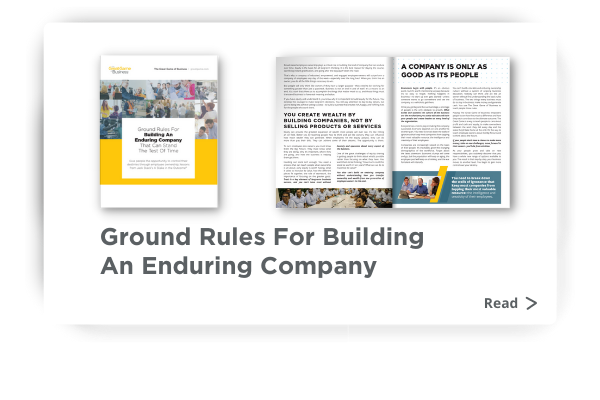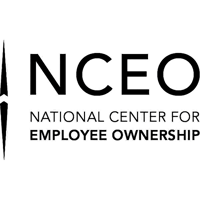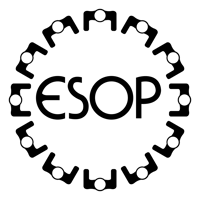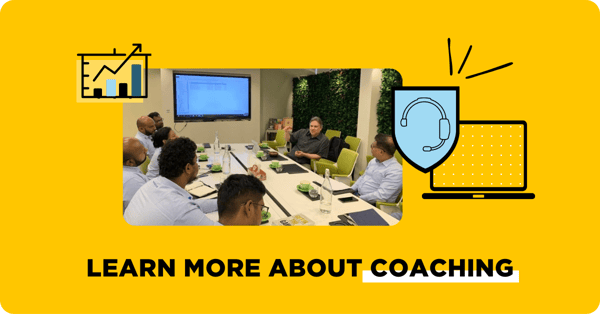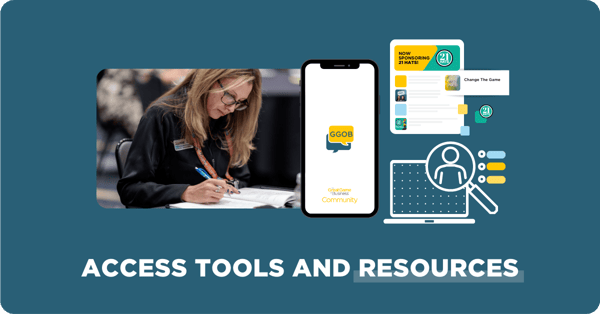
What steps are important to take before starting an ESOP concerning how employees are actively involved in decisions and planning?
You should create a Rights & Responsibilities document that highlights where decisions are made vs. where input may be given. The perfect example is a company layoff – who makes that decision? More detail in the document will help people not go down rabbit holes. A system like The Great Game of Business, which runs on open-book management and High-Involvement Planning should be a prerequisite for an ESOP. Encouraging involvement in the annual and/or strategic plan. This bottom-up approach will get the "ownership mindset" flowing. Key point – if you ask your people for input, you must follow up, or you will create apathy.

How do you balance including people in conversations and not robbing them of their time to do the things they need and want to focus on?
You must create a strong foundation of trust in engaged cultures and then educate your people on the business and how to make critical decisions. For example, meetings can be optional unless it specifically stated mandatory attendance (usually an HR/ESOP item). That leaves it up to the individual to decide where they would get the best ROI – the meeting, completing a project, serving a customer, etc. Post meeting minutes for all meetings, so people who miss could get the critical information and follow up with any questions.

How long of a Board of Director term is the usual practice 7, 8, or 9 years?
Technically the board is approved by the ESOP trustee annually, so they are really a yearly term. This being said, some board members and companies like to have a horizon for when the relationship will end. If there is a robust board of directors' review process, terms are not necessary. The process should lead people to self-select to separate from the company if they are not providing an ROI.

We are a union company; how do we secure a line of credit and performance & payment bond if there are no tangible assets tied to one individual?
Ideally, the company should be backing a line of credit and/or bonds. They should work with their bank and/or bonding company to establish what is needed from the company for this to happen. Having individuals back either of these items may be necessary during the company's early days and/or ESOP. There should be a plan to eliminate the need for individuals to sign for a credit line or bonds. You may need to "shop" for another bank or bonding company if they do not understand the accounting for ESOPs.

Can you compare and contrast an ESOP to partnership models used in Legal/Accounting/Prof services?
Partnerships typically have only a small percentage of the employees reach this status and truly share in the equity of the company. Depending on the partnership model, 40-75% of the equity is distributed to the partners. In an ESOP, the equity is distributed based on W2 wages and/or some formula for longevity. In some states, these entities cannot become ESOPs because of state law that requires ownership to be held by the licensed practitioners.

With the inherent pressures of successful ESOPs needing to be smaller companies, what strategies can be (or are being) utilized successfully to address the issue?
Particularly for those companies dealing with the organizational effects of downsizing are the same in small and large companies. The difference is the magnitude and available resources. Again, the practices and principles of The Great Game of Business are a crucial strategy. It allows everyone to impact profitability and/or find ways to get through tough times with an enhanced ownership mindset. A real example – one of our experts went through downsizing in 2002, and instead of making the typical list of who got laid off, we asked everyone what they would be willing to do. All agreed to take a pay cut of 10% that turned into a 25% cut after six weeks. People volunteered to be laid off to pursue other projects and/or work because they knew others did not have the same options. They agreed to cut all discretionary expenses, top to bottom, except for training/education. The reason was they had the time for these activities and would be stronger. If you believe in your people, they can surprise you with great ideas and immense grace in tough times.

I like the concept of the ESOP being part owners and the senior leadership team being part-owners, and the founder or founders being part owners. I would love to hear thoughts and comments about the advantages and disadvantages of this type of ownership structure.
Minority ESOP: A minority ESOP can be a very effective strategy for some companies. It allows everyone to participate in equity sharing via the ESOP, but it leaves room to reward the individuals who "make things happen." It also keeps control with the owners/leadership group. Depending on the ownership transition timeline, a partial ESOP allows a taste of ownership to all.
Partial ESOP: The partial ESOP also receives a distribution like any other shareholder, which long-term funds the ESOP repurchase obligation.
100% ESOP: In 100% ESOP, the funding does not automatically happen, and it can create a cash constraint over time. The two disadvantages - a partial ESOP in time creates a "want" for the ESOP to become the majority owner if there is a low level of trust in the organization that in time creates a give up attitude. The other disadvantage is that the 100% S corp ESOP is the most tax-advantaged structure. This tax advantage can create quite a surplus of cash, assuming the business is profitable, that can be used for growth and employee rewards of cash bonuses, SARs, or other benefits.

How do you address the imbalance of value to retirees when they cash out their individual shares versus convincing the group to sell outside to an investor? Suppose the shares have not all been allocated. In that case, there is a lot on the table to tempt managers to go on the market and sell for a higher return personally because there are still 30 years left on share distribution. They would collect all of that value if the company were to sell outside and distribute the excess to all owners at the moment of their exit.
This is an inherent issue in ESOPs due to the fiduciary standards they are held to. I believe the strategy to keep this attitude in check is to have a solid governance structure. Specifically, an outside trustee, a board with a minimum of two independent directors, and a majority if you are concerned with the management team. The board has fiduciary duties, but they can consider other items like employment, local community, all stakeholders, etc. The key is that the board vets any offers before the trustee is involved. The trustee can not breach their duty if they are not aware of a potential sale. With this being said, there needs to be a structured process for the board and the trustee on how to handle a potential sale. In theory, all ESOPs should sell strategically if you only consider the ESOP fiduciary standard. However, the reality is not that black and white!

I've heard some discussion about ESOT's as a lower-cost alternative to the ERISA regulations that govern most ESOPs. Is that a viable option for some firms, and are the tax advantages of investing seller proceeds free from capital gains still applicable?
ESOT implementation costs and ongoing costs are significantly lower than ESOP. The ESOT is a viable option, but there are no added tax advantages to the sellers or the company. The ESOT may implement a strategy to minimize taxes like any company, but the strategy would be "employee-centric" vs. owner/management-centric.

Suppose the company is being acquired and the Minority ESOP is being terminated. How do you handle the selling share value to the ESOP if the selling Principal's selling value is dependent on earnouts?
The ESOP trustee would evaluate the potential value the principals would get, including earnouts, and adjust the ESOP participants' selling price to meet fairness. This is not a simple process, but remember that the ESOP is a minority shareholder with only minority shareholder rights. The fact it is an ESOP does not change this status. The principals can sell for less, but not if the upside is easy to get and/or significant. The other option would be to allow the ESOP participants to be included in the earnout plan. Ensure you and your ESOP trustee are aligned with how to handle this to avoid any transaction crises.

We're a small organization (25 people, under $5M in revenue) with open-book management in place. We have allocated ownership as phantom stock, triggers in the event of a sale. We want to move from phantom stock to ESOP. What should we expect the cost to be, and what timeframe? As open-book management, we'd need to plan expenses and resources.
Assuming you do not have sell-side representation, I would say your costs all in would be $150,000-$200,000. This is very dependent on who you select for an ESOP advisor team. Six months is a reasonable time frame, but this year's activity is exceptionally high already. I would encourage you to get the process started as soon as you can.

Suppose an investor buys a company with the intent of converting the ownership to employee-owned. Are there finance companies that will finance the ESOP and pay the proceeds to the investor to reduce their stake? (i.e. the investor buys a company, converts a portion of the shares to ESOP, and the ESOP finance, buys out the investor.) Is that possible? And if yes, who can I talk to about doing that.
Yes, some funds are looking to fund employee ownership conversions. In the last couple of years, there has been an increase in social impact funds and/or funds specific to employee ownership. I would contact the NCEO, as they would have the contact information for these funds—nceo.org. They may also have the names of others who have gone down this same path.

How does a privately owned company with multiple owners go about beginning an ESOP? And what are the advantages/disadvantages?
For your first step - all the owners need to do some self-education on ESOPs via the NCEO, Employee-Ownership Expansion Network, or the ESOP Association. These organizations have webinars, conferences, and written materials related to becoming an ESOP. Also, speak to other owners that have gone through the process. Get their input on the process, pitfalls, and selection of service providers. The Great Game of Business can hook you up with ESOP companies who also practice The Great Game of Business. Click the chat feature in the lower right of your screen to get started.

What impact might COVID-related downsizing have on ESOP companies that were already small before the pandemic?
The most significant impact on ESOP companies would be if you downsized your workforce by 20%. This would trigger a partial plan termination, and those who were laid off would be automatically 100% vested, which impacts your cash demand on the payout.

How important is an independent Board Member with ESOP expertise?
In the first five years of an ESOP, it can be extremely beneficial to have an independent board member who has lived the ESOP experience. Our experts would tell you that they have asked hundreds of CEOs over the years, "if you could start over with your board, what would you do?" – the most common answer by far was a board member with ESOP experience. The reason is that ESOPs are complex and not a mainstream business concept that people understand, and having that knowledge would have accelerated the organization's education on ESOPs and the long-term strategic issues that come with being an ESOP. Some people believe their ESOP service providers can do the education, but I have found real life is hard to beat.

At the beginning of an ESOP, would you recommend an external Trustee (since it's a specialized role)?
100% yes regarding an outside trustee for the ESOP transaction. After the transaction, it varies. Inside or outside trustees are perfectly fine either way. The key is your belief in risk management. Being an ESOP trustee carries the most stringent fiduciary standards, and if you are an inside trustee, they need to understand those risks. The other consideration is bringing in the knowledge vs. educating your internal trustees. Do they have the time and resources to get educated?

We are a company transitioning to an ESOP. Upon completion, we've heard time and again to expect a DOL audit of the transaction. Is it just the transaction the DOL audits (or are they auditing the company in general), and what should we expect from that situation? (i.e., what do they look at, process, etc.)
It is a strong possibility, but the audit numbers have dropped dramatically in the last 18 months. It also depends on what office jurisdiction you are under. The audits focus on the ESOP transaction and specifically whether the ESOP pays fair market value or overpay – price, warrants, interest rates, etc. They do not audit the entire company, from our expert's experience. If you are audited, work with your service providers, have the auditor go to your attorney's office – corporate or ESOP. Give them all they ask for and let them have at it. You do not want the auditor walking around your company asking random questions to anyone. Too many people do not have the adequate knowledge to be answering ESOP transaction questions.

What kind of questions should I be bringing to a lawyer when restructuring to become ESOP?
First, be sure the lawyer has ESOP experience. Meaning they have done at least a dozen transactions. You want legal experience in ESOPs. It makes a huge difference for your transaction.
Questions:
- Tax advantages for company and selling shareholders
- Fees
- ERISA regulations – what are the impacts
- Do you have a boiler ESOP plan document for review? This will help you ask more questions once you read it.
- Risks associated with being an ESOP
Use the resources available at the NCEO, Employee-Ownership Expansion Network, or the ESOP Association.

We are a partial ESOP (30%) and partially closely held. Let's talk about exits and transitions. Merits of going 100% ESOP? Or if a 3rd party would be interested? Etc?
If you believe in the concept of employee ownership and keeping companies local, the 100% ESOP is a great option. Also, an S corp 100% is the most tax-advantaged structure a corporation can become. 100% ESOP also gives the employee-owners the chance to build their ESOP retirement accounts even faster. Remember, the ESOP can only pay fair market value, just like when you did the 30% (hopefully, the company value has increased since then).
A 3rd party sale allows for potential maximum value creation for all shareholders. Some buyers keep the ESOP plan, but it is not a high probability. If you sell, you give up control, period. Whatever they say or promise goes out the window once the sale is final. The number of selling shareholders that regret selling to a 3rd party is relatively high. Remember, you will live with that legacy for the rest of your life.

With the looming Jan 1, 2022 increase to the capital gains tax, do you anticipate a flurry of ESOP activity in the second half of 2021. Separately, do you think this will cause more people to rethink making a partial sale and go all-in with a 100% sale, and what are the pros and cons of that action?
Yes, activity will be high; it already is. Our experts tell us every service provider they know says the 2021 year-end transaction numbers will be the highest in the history of ESOPs. Yes, there may well be more tilt towards 100% transaction, but they should not let capital gains taxes override, not putting the company in a cash-strapped situation. The due diligence process should be the same, and there needs to be a commonsense balance that meets the needs of the selling shareholders and the company. Tax savings are great, but there could still be a better financial outcome for the sellers with a partial ESOP transaction.

Our distribution policy pays out 20% annually over five installments and begins when the first election is made. When participants defer election, the percentage eligible for distribution the first year still starts at 20%, and the remaining is paid over five installments. For example, a participant can defer for six years and then elect a distribution. At that time, they are eligible for 20% and still have five installments. I realize this is a way to manage cash flow and RO but does anyone see distribution percentages eligible based on termination date versus the first date of the election?
So, in the above example, since the participant has been terminated for six years, upon his first election (his 7th year), he would be eligible to receive 100% of his balance. Most ESOPs, new or older, are forcing participants to take their payments once they leave employment. They are not giving them the option to pass on a distribution. Your plan document will need to be updated to make sure it is congruent with the process you would like. ESOP boards and leadership have shifted to a mindset where value goes to those actively employed, not those sitting on the sidelines. Most ESOPs pay out 100% of the account within five years. Some take them out at the value when they leave, and some let them ride the value wave for five years. It is not about right or wrong, but more about cash flow and where the equity should be going.

How does one deal with the compensation of the owner and his or her family? That could strip out the profit. Who makes the call of what is "reasonable" if they only sold 30%?
Assuming you have a board of directors since you are an ESOP, the board should be the group that monitors this situation to make sure it is fair to the ESOP. However, the ESOP is a minority shareholder, and to a certain degree, they are at the mercy of the majority shareholder's decisions in many regards. Reasonable compensation is easily achieved via a compensation study. Distributions go to all shareholders. Perks, that is where it can sticky.

There seems to be a mindset that an ESOP is ideal for facilitating legacy and culture but not ideal for maximizing an owner's market/exit value. Is this a fair statement? Why or why not?
Yes, this is a fair statement. An ESOP will struggle to match the value of strategic sale. Sometimes, they can, but typically, the owners will leave 10-30% on the table to create an ESOP. When ESOP transactions try to match strategic value, this is when trouble can come from a DOL audit. The ESOP is a pure financial buyer. There are no synergies of customers, markets, administrative efficiencies, etc. ESOP's can only pay fair market value based on an independent valuation via ERISA regulations.

Can you give an example of the fee structure?
The following is the minimum range of fees but realize this is dependent on which firms you use, the complexity of the ESOP transaction, and if you have a complete set of sell-side advisors and ESOP advisors.
Trust side advisors
- Trustee - $25,000-$35,000
- Financial advisors - $35,000-$50,000
- ESOP legal - $40,000-$50,000
- ESOP administration - $8,000-$12,000
Company side advisors
- Corporate attorney - $10,000-$15,000
- Accountants - $8,000-$12,000
- Financial advisor $75,000-$175,000

What are some best practices that connect ESOP companies with The Great Game of Business? Alternatively, what are some good ESOP "Additional Metrics" that you see show up on Employee-Owned Scoreboards?
The best practice for ESOP companies to connect to GGOB is open-book management, High-Involvement Planning™, MiniGames™, and bonus structures. It is a myth that ESOPs must share financial information with all employees. They do have to share a summary of the valuation report, but most people have no clue how valuation works. The sharing of equity in ESOPs without financial understanding is plain CRAZY.
The opposite would be defined ownership behaviors measured and used in performance reviews, how a dollar of revenue, gross margin, or profit impacts ESOP share value. ESOP repurchase obligation – what the company needs to pay out those ESOP participants that have left (cash flow). Year-end benefit statements that show all the costs of benefits – individually and what the company pays, e.g., social security by both.

.png)

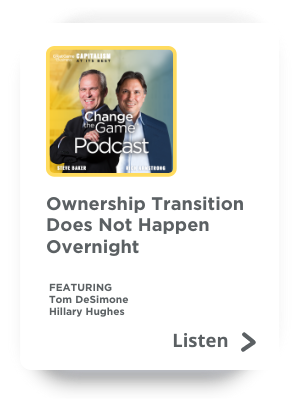
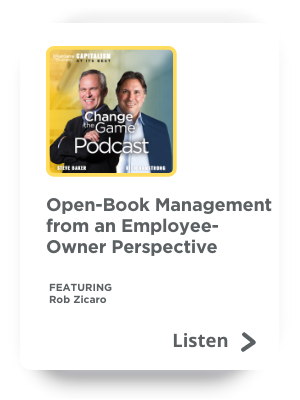
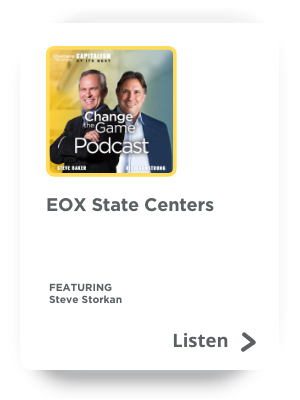
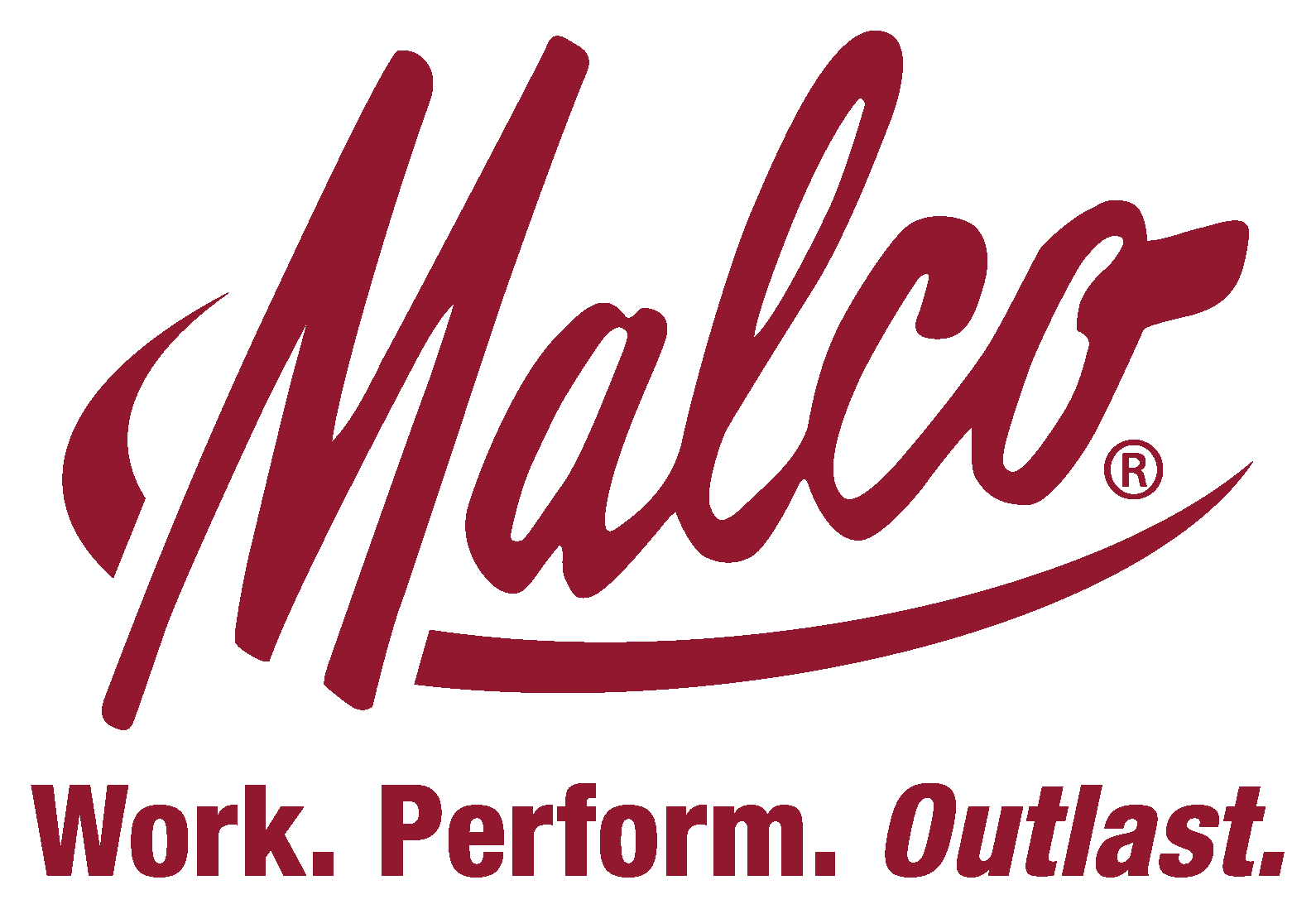

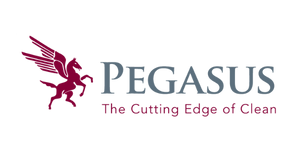
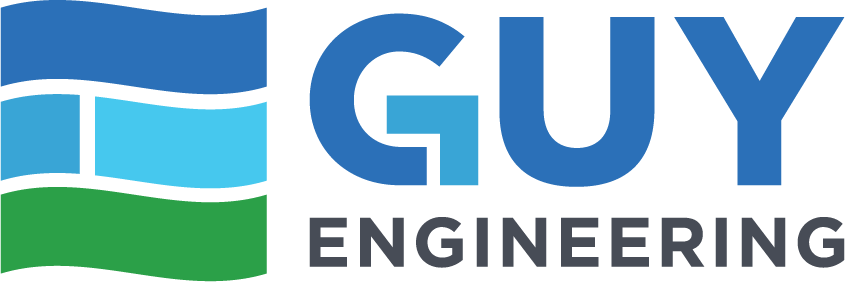

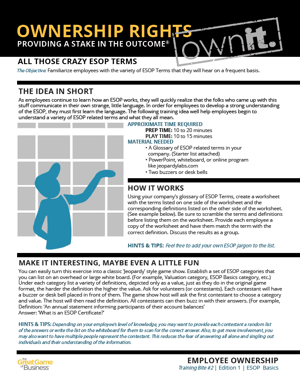

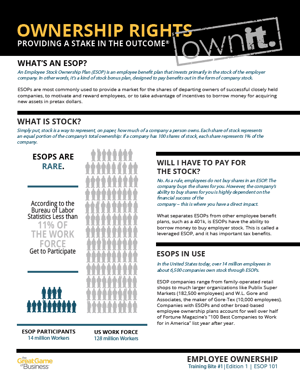

.png?width=700&name=White%20Paper%20Graphic%20(2).png)
